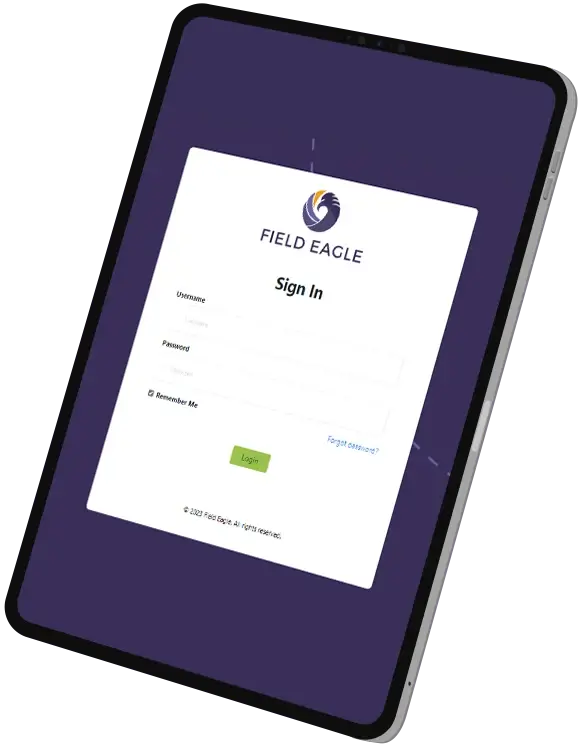How IoT and Sensors Are Reshaping Equipment Inspections
In high-risk industries like mining, oil & gas, and manufacturing, equipment inspections are essential—but they’ve long been time-consuming, manual, and reactive. Thanks to the rise of IoT (Internet of Things) and smart sensors, that’s changing. IoT and equipment inspections are now more efficient due to these advancements.
Connected technologies are helping teams move from clipboard checklists to live equipment monitoring, ushering in a new era of proactive, real-time inspection workflows.
What Is IoT in Industrial Inspections?
IoT refers to physical devices embedded with sensors, software, and connectivity features that allow them to collect and exchange data. In the context of inspections, IoT and equipment evaluations mean:
- Monitoring equipment conditions in real time
- Tracking usage, temperature, vibration, and more
- Sending alerts when thresholds are breached
Key Benefits of IoT-Enabled Inspections
- Early Problem Detection
Sensors identify anomalies before equipment fails, reducing downtime and emergency repairs. - Continuous Monitoring
Unlike periodic inspections, IoT devices monitor 24/7, increasing visibility and asset protection. - Reduced Manual Workload
Teams can focus on exceptions and actions, not repetitive checks. - Data-Driven Decisions
Historical data from sensors helps predict maintenance needs and improve inspection planning, showcasing the benefits of IoT and equipment evaluations. - Better Compliance and Reporting
Automatic logs make it easier to generate audit-ready reports and meet safety regulations.
Real-World Use Cases
- Mining: Vibration sensors on drills and conveyors detect wear and signal service needs
- Oil & Gas: Pressure and flow sensors prevent leaks and support pipeline integrity, demonstrating IoT in equipment inspections.
- Manufacturing: Smart temperature sensors alert teams to overheating components before failure
Integrating IoT with Inspection Software
IoT technology is most effective when paired with a centralized digital platform. With the right software, IoT and equipment inspections become more streamlined, and teams can:
- View live data alongside inspection reports
- Automate maintenance alerts based on sensor inputs
- Track the health of all assets in one dashboard
This combination makes inspections faster, safer, and more accurate.
Final Thoughts
IoT and sensors aren’t replacing inspectors—they’re empowering them. By reducing guesswork and delivering real-time insights, integrating IoT with equipment inspections helps teams stay ahead of problems, reduce risk, and extend asset life.
It’s not just a tech trend. It’s the future of inspections.
IoT and equipment inspections work together by embedding physical devices with sensors, software, and connectivity features that continuously monitor equipment conditions. This integration improves industrial safety through:
Real-time monitoring of equipment usage, temperature, vibration, and other critical parameters
Automatic alerts when safety thresholds are breached, preventing dangerous failures
Early problem detection that identifies anomalies before equipment fails completely
24/7 continuous monitoring unlike traditional periodic inspections
Data-driven maintenance decisions based on historical sensor data and trends
This combination transforms reactive inspection processes into proactive safety management systems that protect workers and assets in high-risk industries.
Key benefits of IoT and equipment inspections include:
Early problem detection through sensors that identify anomalies before equipment failures occur
Continuous 24/7 monitoring providing constant visibility and asset protection
Reduced manual workload allowing teams to focus on exceptions and corrective actions
Data-driven decision making using historical sensor data to predict maintenance needs
Better compliance and reporting with automatic logs for audit-ready documentation
Reduced downtime through proactive maintenance scheduling based on real-time data
Extended asset life by addressing issues before they cause major damage
These improvements help organizations move from reactive maintenance to predictive maintenance strategies.
Common applications of IoT and equipment inspections include:
Mining operations: Vibration sensors on drills and conveyors detect wear patterns and signal service needs
Oil & gas facilities: Pressure and flow sensors prevent leaks and support pipeline integrity monitoring
Manufacturing plants: Smart temperature sensors alert teams to overheating components before failure
Construction sites: Structural monitoring sensors track building stability and equipment performance
Power generation: Turbine monitoring systems detect imbalances and efficiency issues
Chemical processing: Environmental sensors monitor hazardous conditions and equipment safety
These applications demonstrate how IoT and equipment inspections adapt to industry-specific safety and operational requirements.
Effective integration of IoT and equipment inspections requires:
Centralized digital platforms that combine live sensor data with inspection reports
Automated maintenance alerts triggered by sensor inputs and predefined thresholds
Unified asset health dashboards tracking all equipment in one comprehensive view
Historical data analysis capabilities for trend identification and predictive maintenance
Mobile accessibility allowing field teams to access IoT data during inspections
Compliance reporting features that automatically generate audit-ready documentation
This integration makes inspections faster, safer, and more accurate by providing inspectors with real-time insights alongside traditional inspection workflows.
IoT and equipment inspections enable predictive maintenance through:
Continuous data collection from sensors monitoring equipment performance parameters
Pattern recognition algorithms that identify early warning signs of potential failures
Threshold-based alerts that trigger maintenance actions before problems escalate
Historical trend analysis supporting long-term maintenance planning and budgeting
Automated scheduling of maintenance activities based on actual equipment condition
Performance optimization through data-driven insights into equipment efficiency
This approach transforms maintenance from scheduled intervals to condition-based interventions, reducing costs while improving equipment reliability and extending asset life in high-risk industrial environments.







